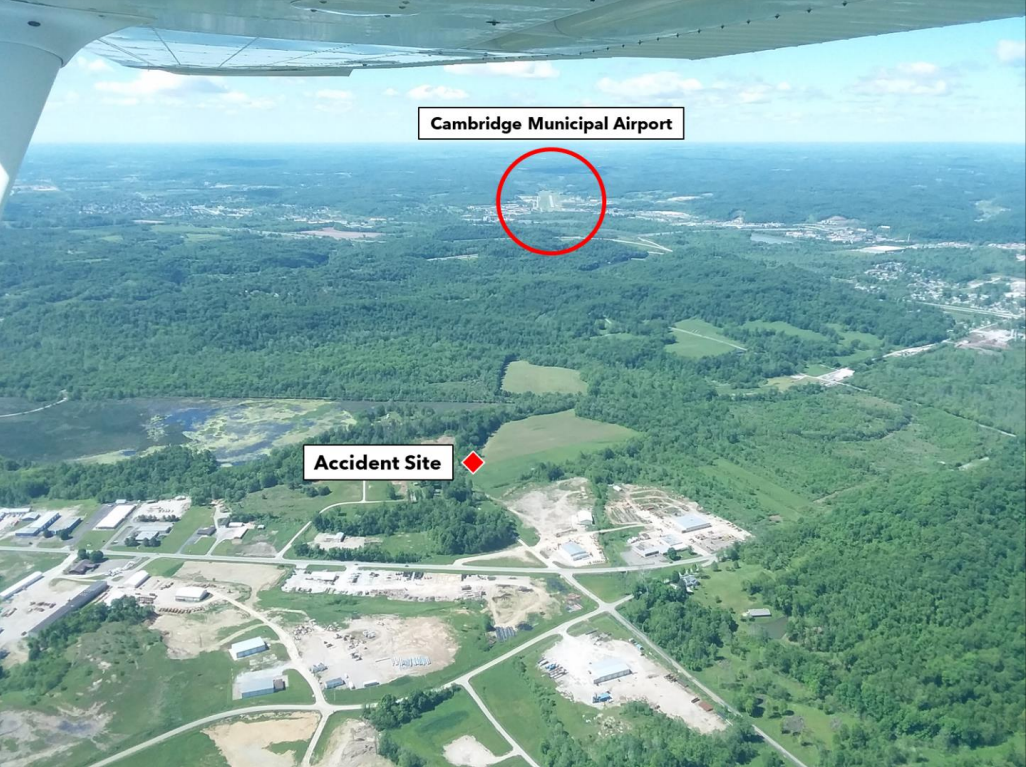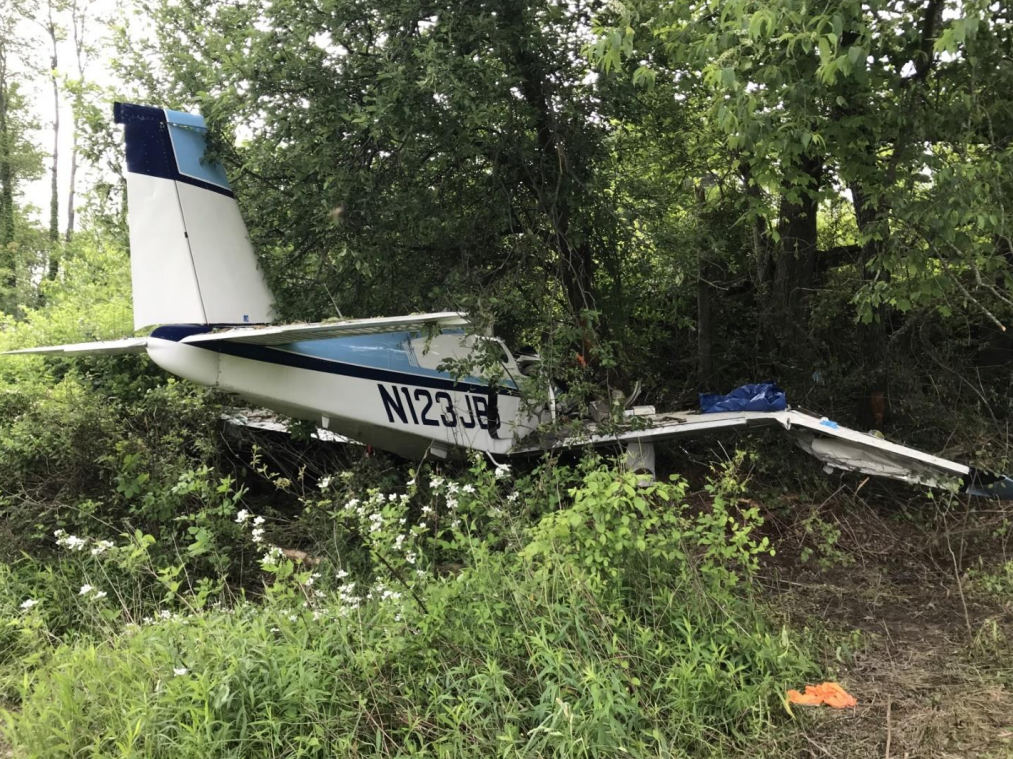
ASN Wikibase Occurrence # 236484
This information is added by users of ASN. Neither ASN nor the Flight Safety Foundation are responsible for the completeness or correctness of this information.
If you feel this information is incomplete or incorrect, you can submit corrected information.
| Date: | Wednesday 27 May 2020 |
| Time: | 14:58 |
| Type: |  Beechcraft 35-A33 Debonair |
| Owner/operator: | Private |
| Registration: | N123JB |
| MSN: | CD-313 |
| Year of manufacture: | 1961 |
| Total airframe hrs: | 3872 hours |
| Engine model: | Continental IO-470-N |
| Fatalities: | Fatalities: 1 / Occupants: 1 |
| Aircraft damage: | Destroyed |
| Category: | Accident |
| Location: | Cambridge, OH -
 United States of America United States of America
|
| Phase: | En route |
| Nature: | Ferry/positioning |
| Departure airport: | Columbus-Ohio State University Airport, OH (OSU/KOSU) |
| Barnesville-Bradfield Airport, OH (6G5) | |
| Investigating agency: | NTSB |
| Confidence Rating: |
On May 27, 2020, about 1458 eastern daylight time, a Beech 35-A33 airplane, N123JB, was substantially damaged when it collided with trees during a forced landing near Cambridge, Ohio. The pilot was fatally injured. The airplane was operated as a Title 14 Code of Federal Regulations Part 91 ferry flight.
The pilot was conducting a ferry flight after the engine was disassembled, inspected, and reinstalled following a wheels-up landing incident that occurred a few months before the accident. About 51 minutes after takeoff the pilot declared an emergency with the air traffic controller due to a loss of engine power and stated that the airplane did not have sufficient altitude to land at the nearest airport. The pilot maneuvered the airplane to land in a nearby field, but he was unable to touch down before the end of the field where the airplane impacted trees a few feet above the ground in a level pitch attitude.
Several witnesses reported seeing the airplane flying at a low altitude with a noticeable engine issue. Some of these witnesses reported hearing the engine "sputtering" or "misfiring" before the airplane descended out of their sightline behind trees. One witness reported seeing a “noticeable but faint, wispy, transparent film” trailing the aircraft and “white or light gray puffs” near the exhaust.
According to recorded engine monitor data, during takeoff and initial climb, the fuel flow was 22 to 23 gallons per hour (gph), which was consistent with the airframe manufacturer’s engine performance charts at rated horsepower and manifold pressure. However, as the flight continued, the fuel flow increased to 29 to 30 gph, which was more than double the expected fuel flow for a leaned engine operating at 75% power during cruise flight.
About 41 minutes into the flight, the No. 3 cylinder exhaust gas temperature (EGT) and cylinder head temperature (CHT) began decreasing and at a higher rate when compared to the other cylinders. Similarly, about 4 minutes before the accident, the No. 5 cylinder EGT/CHT also decreased and was inconsistent with the remaining four cylinders.
Postaccident examination of the airplane revealed fuel streaks emerging from a louvered vent and access panel at the lower right side of the engine compartment, continuing aft along the lower right fuselage. There was no evidence of pooling or fuel streaking on the internal surfaces of the engine cowling. The fuel lines forward of the firewall exhibited no evidence of fuel leaks or obstructions, and all fractured fuel line fittings exhibited features consistent with impact related damage.
The No. 3 cylinder head exhibited fuel stains on several cooling fins located on the forward-facing side of the intake port; however, there were no apparent cracks or fuel stains around the fuel injector nozzle or spark plug ports, and the No. 3 fuel injector line did not exhibit any damage or leaks. The No. 3 intake flange gasket compression faces were flattened around the inner diameter hole and there were no apparent kinks or tears. The No. 3 cylinder intake elbow and cylinder intake port flange face did not exhibit any fuel stains. The inter-cylinder baffle between the No. 3 and 5 cylinders exhibited prominent fuel straining and streaking. The remaining cylinders and engine components did not exhibit any visible fuel stains. The postaccident engine examination did not reveal a mechanical failure that would have prevented normal operation.
Based on the excessive fuel flow and engine operation irregularities with the Nos. 3 and 5 cylinders during the flight, the fuel stains on the No. 3 engine cylinder near the intake, and the fuel streaks on the inter-cylinder baffle and the lower right side of the fuselage, the loss of engine power was likely due to a fuel injection system leak at or near the No. 3 cylinder.
Probable Cause: A fuel injection system leak at or near the No. 3 cylinder that resulted in a partial loss of engine power during cruise flight.
Accident investigation:
 |
|
Sources:
https://www.10tv.com/article/pilot-seriously-injured-guernsey-county-plane-crash-2020-may
https://www.timesreporter.com/news/20200527/airplane-crashes-in-field-outside-cambridge-pilot-seriously-injured/1
NTSB
https://flightaware.com/live/flight/N123JB
https://registry.faa.gov/aircraftinquiry/NNum_Results.aspx?NNumbertxt=123JB
https://www.airport-data.com/aircraft/photo/001424693.html (photo)
History of this aircraft
Other occurrences involving this aircraft
| 3 February 2020 | N123JB | Private | 0 | Ohio State University Airport (KOSU/OSU), OH |  |
min |
| Gear-up landing | ||||||
Location
Images:


Revision history:
| Date/time | Contributor | Updates |
|---|---|---|
| 27-May-2020 23:24 | Geno | Added |
| 27-May-2020 23:34 | Geno | Updated [Date, Aircraft type, Registration, Cn, Operator, Source] |
| 28-May-2020 07:33 | The2ndBaron | Updated [Nature] |
| 29-May-2020 19:35 | Captain Adam | Updated [Total fatalities, Location, Source, Damage, Narrative] |
| 24-Jun-2021 07:27 | aaronwk | Updated [Time, Phase, Nature, Departure airport, Destination airport, Source, Narrative] |
| 08-Jun-2023 21:05 | Captain Adam | Updated [[Time, Phase, Nature, Departure airport, Destination airport, Source, Narrative]] |
Corrections or additions? ... Edit this accident description
The Aviation Safety Network is an exclusive service provided by:


 ©2024 Flight Safety Foundation
©2024 Flight Safety Foundation